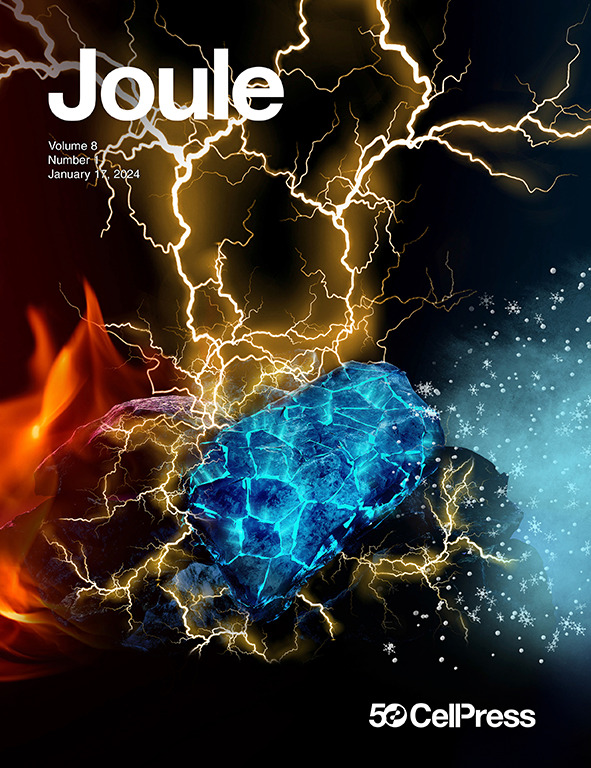电极纳米约束与相间化学的关系
IF 35.4
1区 材料科学
Q1 CHEMISTRY, PHYSICAL
引用次数: 0
摘要
在先进电池中,电极/电解质界面对电池性能至关重要,影响电池反应的可逆性和速率能力。虽然很多研究都集中在电解质方面,但我们的研究揭示了电极层间距离对相间化学的重要影响。我们发现,石墨阳极中较小的层间距离导致对Li+和溶剂共插层的灵敏度更高,导致界面相的liff差,从而降低了稳定性。相反,更大的层间距离允许阴离子丰富的溶剂化结构,从而产生富liff的界面,促进可逆的插/脱插反应。层间距离和相间化学之间的相关性为设计下一代电池电解质和电极提供了新的策略,超越了电解质工程,将电极结构考虑在内。我们的研究结果普遍适用于不同的电解质系统,为优化电池性能提供了一个强大的框架。本文章由计算机程序翻译,如有差异,请以英文原文为准。


Correlating electrode nano-confinement to interphase chemistry
The electrode/electrolyte interphases in advanced batteries are critical for their performance, influencing the reversibility and rate capability of cell reactions. Although much research has focused on the electrolyte side, our study reveals the significant impact of the electrode’s interlayer distance on interphasial chemistry. We discovered that smaller interlayer distances in graphitic anodes lead to higher sensitivity to co-intercalation of Li+ and solvents, resulting in LiF-poor interphases that reduce stability. Conversely, larger interlayer distances allow anion-rich solvation structures, resulting in LiF-rich interphases and facilitating reversible intercalation/deintercalation reactions. This correlation between interlayer distance and interphasial chemistry offers new strategies for designing next-generation battery electrolytes and electrodes, moving beyond electrolyte engineering to include electrode structural considerations. Our findings are universally applicable across diverse electrolyte systems, providing a robust framework for optimizing battery performance.
求助全文
通过发布文献求助,成功后即可免费获取论文全文。
去求助
来源期刊

Joule
Energy-General Energy
CiteScore
53.10
自引率
2.00%
发文量
198
期刊介绍:
Joule is a sister journal to Cell that focuses on research, analysis, and ideas related to sustainable energy. It aims to address the global challenge of the need for more sustainable energy solutions. Joule is a forward-looking journal that bridges disciplines and scales of energy research. It connects researchers and analysts working on scientific, technical, economic, policy, and social challenges related to sustainable energy. The journal covers a wide range of energy research, from fundamental laboratory studies on energy conversion and storage to global-level analysis. Joule aims to highlight and amplify the implications, challenges, and opportunities of novel energy research for different groups in the field.
 求助内容:
求助内容: 应助结果提醒方式:
应助结果提醒方式:


